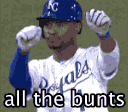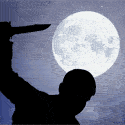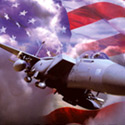|
I think you mean a quick and awesome.
|
|
|
|

|
| # ? May 13, 2024 23:14 |
|
Here is a widefield image of the Owl nebula and M108 galaxy I took last night. The moon limited the number of objects suitable for a serious imaging run, and this one was the most promising candidate. Wide Owl
|
|
|
|
Jekub posted:A quick and dirty Orion Nebula. That's amazing 
|
|
|
|
13 second exposure Garden of the Gods by FullerFotos.net, on Flickr
|
|
|
|
Bulb mode. Can anyone explain how to use it well? What I can seem to understand is how long I should be exposing for. For example, I'm going to check out some graffiti at night in an area I don't want stick around too long in. I know the shot is going to need > 30s exposure. But how do I know if it needs 45s, 60s, or longer? I'd like the correct exposure on the first shot if at all possible. s0meb0dy0 fucked around with this message at 19:12 on Feb 5, 2012 |
|
|
|
s0meb0dy0 posted:Bulb mode. Can anyone explain how to use it well? What I can seem to understand is how long I should be exposing for. Darn, and I was going to suggest taking test shots. I'm sure there's math you could do to figure it out, but I always go lazy and take several shots until I get a decent one.
|
|
|
|
xzzy posted:I'm sure there's math you could do to figure it out, but I always go lazy and take several shots until I get a decent one. This is what I do, too. Laziness! (And you get better at guesstimating reasonably accurately the more you do.) So I'm doing a Project 52, wherein I make one night shot per week, for a year. Here is week 5. 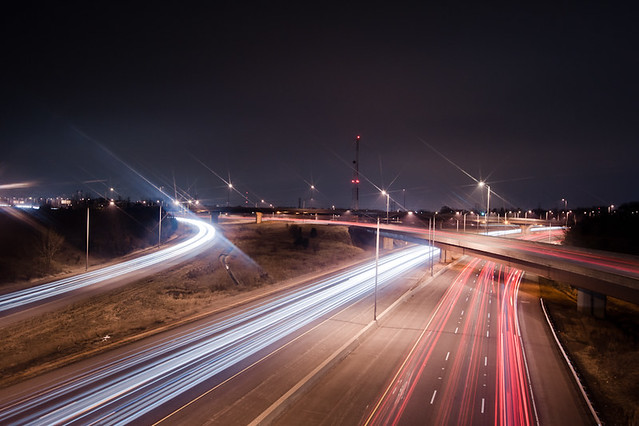 Project 52: Week 5 by C. Wade Photography, on Flickr The horizon is a little soft. Must have nudged the focus when I was adjusting the star filter.
|
|
|
|
Ishkibibble_Fish posted:This is what I do, too. Laziness! (And you get better at guesstimating reasonably accurately the more you do.) How do you adjust your white balance to get this look? I have a terrible time adjusting white balance to get rid of the yellow/warm look of my night photos without turning them completely cold.
|
|
|
|
Falco posted:How do you adjust your white balance to get this look? I have a terrible time adjusting white balance to get rid of the yellow/warm look of my night photos without turning them completely cold. Shift towards blue until it starts to balance, then lots of desat on the orange/yellow.
|
|
|
|
TheLastManStanding posted:Shift towards blue until it starts to balance, then lots of desat on the orange/yellow. Basically this. I struggled with it a little in this photo. Here's the original:  Brought oranges and yellows down individually, and a slight desat overall.
|
|
|
|
Excellent thanks!
|
|
|
|
ncol posted:
no way. i think it's great the way you took it.
|
|
|
|
 P2047777 by HelloWorldEp1, on Flickr first go at this of the london eye from waterloo bridge, 30 second exposure, tripod, freezing cold night.
|
|
|
|
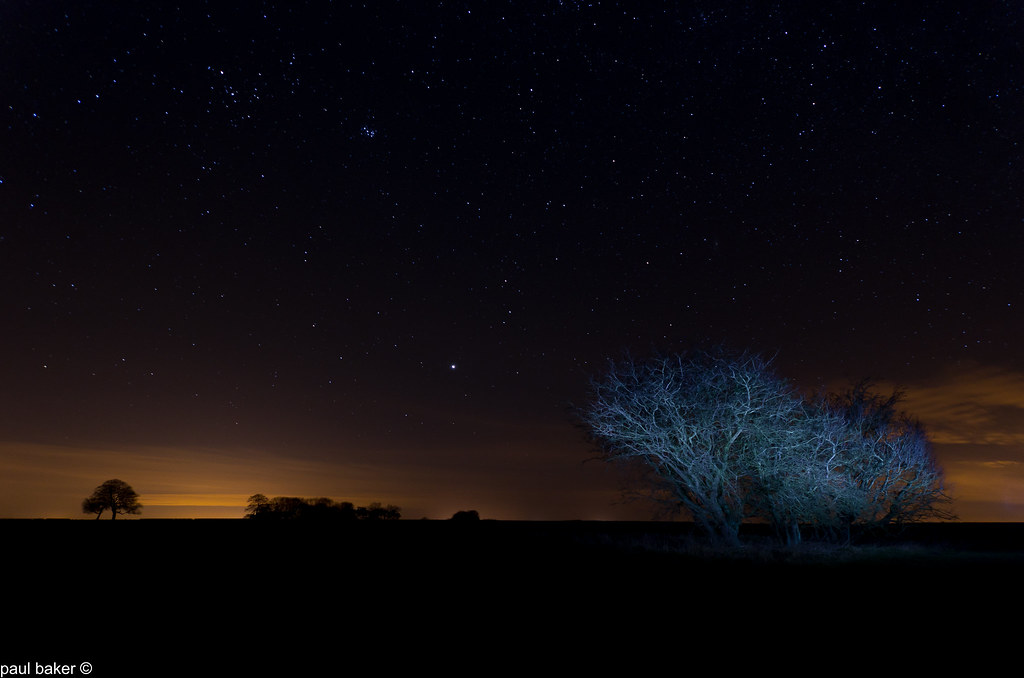 Treesky. by Paul Baker2010, on Flickr Here's one I took on a night out with a buddy to try and get a picture of the recent Aurora. Alas, no aurora but thought I'd get a few photographs anyway. On reflection I wish I had light up the trees more evenly and got a bit more of the ground illuminated. Some of these images are incredibly, makes me feel like a complete novice!
|
|
|
|
 Bruges. by Paul Baker2010, on Flickr Also, heres one from a recent trip to Belgium around Christmas.
|
|
|
|
What is the difference between stacking multiple exposures and just leaving the lens open for a long period of time (with star trails)? I can only think that stacking would be beneficial if it's a bright night, but all of my favorite star trails involve stacking 50+ exposures for one picture.
|
|
|
|
yoohoo posted:What is the difference between stacking multiple exposures and just leaving the lens open for a long period of time (with star trails)? I can only think that stacking would be beneficial if it's a bright night, but all of my favorite star trails involve stacking 50+ exposures for one picture. Shorter exposures reduce the risk of overheating the sensor perhaps? I could see it helping with errors. With 50 exposures it's unlikely anyone would notice if you threw one or two frames out. With a single exposure, you just spent 30 minutes putting all your eggs in one basket.
|
|
|
|
xzzy posted:Shorter exposures reduce the risk of overheating the sensor perhaps? It's mainly this. Most of the time especially on the lower model cameras, you stack images to reduce the amount of digital noise in the photo.
|
|
|
|
Stacking multiple exposures allows you to cover a higher dynamic range. For instance, in a scene with a very bright ground an foreground such as a brightly lit building and a nice dark sky. You can make an exposure for the foreground and underexpose the sky, then do the same for the sky. You can then stack these and get a correct exposure for both.
|
|
|
|
ataxia posted:Stacking multiple exposures allows you to cover a higher dynamic range. For instance, in a scene with a very bright ground an foreground such as a brightly lit building and a nice dark sky. You can make an exposure for the foreground and underexpose the sky, then do the same for the sky. You can then stack these and get a correct exposure for both. Right, but for night photography usually the exposures are pretty consistant. So the HDR effects would be neglagable. For me though I go with the one long exposure, it seems that my D70s doesn't like the short night exposures and throws a bunch of noise and banding in, but when I do a 10 or more minute exposure everything is just peaches. YMMV though.
|
|
|
|
Lord Rupert posted:Right, but for night photography usually the exposures are pretty consistant. So the HDR effects would be neglagable. For me though I go with the one long exposure, it seems that my D70s doesn't like the short night exposures and throws a bunch of noise and banding in, but when I do a 10 or more minute exposure everything is just peaches. YMMV though.
|
|
|
|
I've always been of the understanding that theres always an increase in noise the longer you expose, but maybe I'm just talking crap.
|
|
|
|
This didn't turn out quite like I expected but it was the clearest one I was able to get with the tripod on my bed.  Bedroom Skyline by jg zkc, on Flickr
|
|
|
|
This was taken with a friend's telescope using his very nice S-Big camera and narrowband filters (Sulphur 2, Hydrogen Alpha, Oxygen 3) in the classic Hubble palette. I think around 20 hours total data.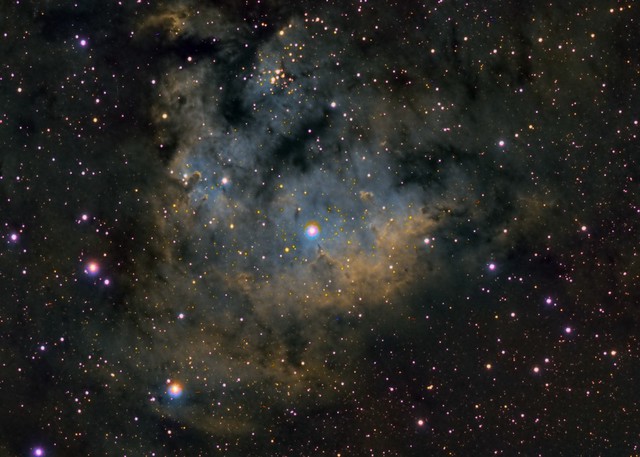 sh171 Narrowband by tmarkuk, on Flickr The colour fringe around the bright stars comes from some nasty internal reflections caused by the filters, looks like he needs to send those back. Annoyingly each filter has reflected at slightly different angles, brightness and size hence the colour effects. This is my first attempt at processing narrowband, it makes for a very different challenge than working single shot colour RGB images as I normally do, also makes me want to spend lots of money.
|
|
|
|
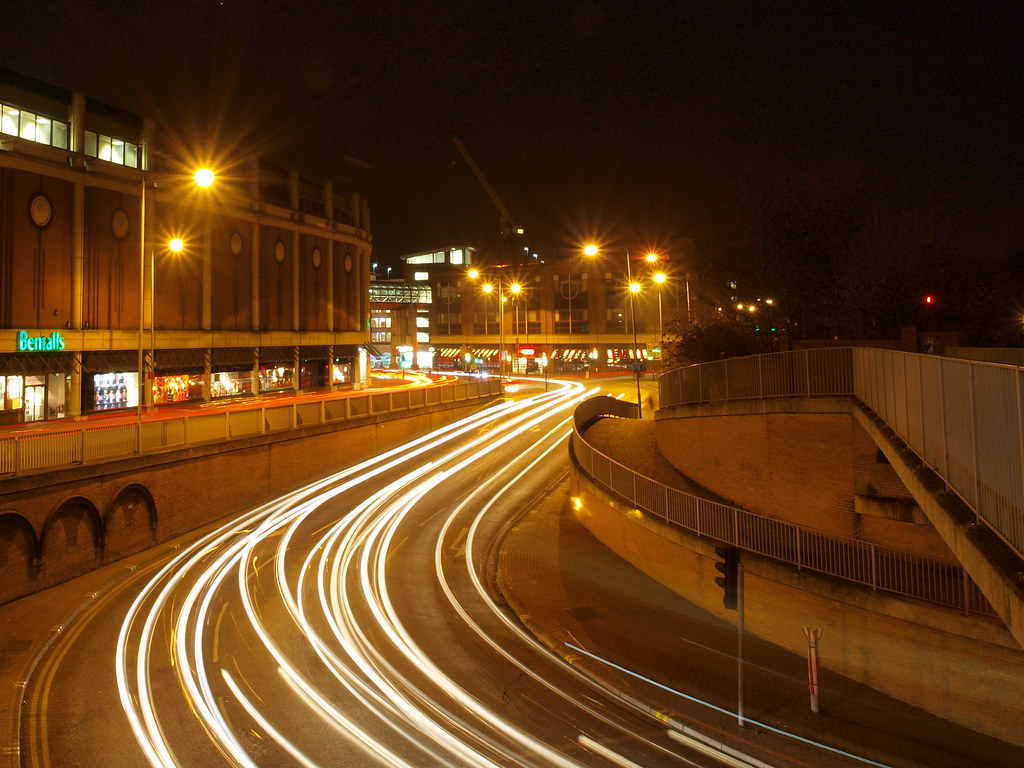 P2117807 by HelloWorldEp1, on Flickr Blown out street lights, but the cars where not travelling fast enough for a short exposure, needed 13 seconds between traffic light cycles.
|
|
|
|
doodle_duck_dandy posted:
Looks like you were already pretty stopped down, but you can try an ND filter for this next time. Like the composition, though.
|
|
|
|
Thanks for the advice, I will be getting access to a few grad filters in a couple of weeks.
|
|
|
|
Jekub posted:This was taken with a friend's telescope using his very nice S-Big camera and narrowband filters (Sulphur 2, Hydrogen Alpha, Oxygen 3) in the classic Hubble palette. I think around 20 hours total data. That's stunning, good god. I don't think I even want to know what a setup like that would cost. Haha. Spectacular results, though.
|
|
|
|
ataxia posted:
This is amazing. I love the tree how it is; would be interested to see more of the ground lit, but I don't think the photo requires it. Well, here's week six: 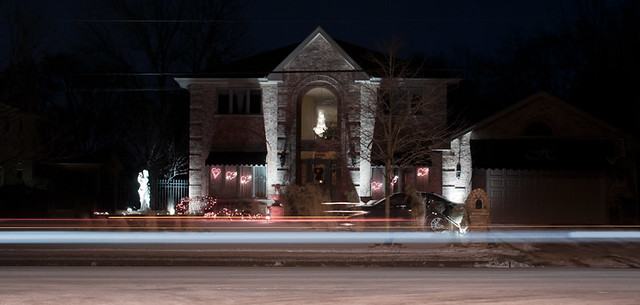 project 52, week 6 by C. Wade Photography, on Flickr Should have used a grad filter on the bottom I guess, and could live without the traffic trail, but it was 12 degrees! Get in, get out.
|
|
|
|
1.5 seconds, just set the X100 on a guardrail, 2 shots stitched. DSCF1679-Edit.jpg by mr-chompers, on Flickr
|
|
|
|
Thank you Ishki, always nice to hear compliments in between all the critique. You have some amazing shots on your flickr, makes me look comparatively puny! Also love the variety of colors in pimms, looks like a beautiful place.
|
|
|
|
 Untitled by Benbrewer85, on Flickr  Untitled by Benbrewer85, on Flickr Unfortunately I didn't get any train shots with interesting light trails from the road underneath, but it's something to aim for next time. Something like a combination of the above 2 photos was what I was after. Also I think they're a bit light overall, but it was hard with the street light so prominent. I might try from the other sde of the bridge next time, or try for a higher vantage point if I can think of something.  Untitled by Benbrewer85, on Flickr
|
|
|
|
poopinmymouth posted:1.5 seconds, just set the X100 on a guardrail, 2 shots stitched. I love this, the different coloured lights reflecting on the water are beautiful! This thread really makes me want to go out and get some shots tonight.
|
|
|
|
 P2197870 by HelloWorldEp1, on Flickr http://en.wikipedia.org/wiki/Trafalgar_Square  P2197820 by HelloWorldEp1, on Flickr http://en.wikipedia.org/wiki/London_Eye
|
|
|
|
s0meb0dy0 posted:Bulb mode. Can anyone explain how to use it well? What I can seem to understand is how long I should be exposing for. Do test shots at a high iso (3200-6400) to make sure the shot is all in focus and framed right, then drop it down. It's hard (but not impossible) to do a great exposure on the first shot, but I'd take a few just in case. There is nothing worse than going home after shooting and finding out that photo that looked great on your display looks terrible on your computer. Also, invest in a shutter release cable if you haven't already... pretty cheap on amazon, and makes it way easier and less shaky.
|
|
|
|
I made a thing with what there cameras Waikato Night by trambopaline, on Flickr
|
|
|
|
That thing's sure a thing.
|
|
|
|
Trambopaline posted:I made a thing with what there cameras Great photo. Is it sunrise and a city on a horizon, or two cities?
|
|
|
|
Trambopaline posted:I made a thing with what there cameras Very nice, New Zealand looks great for dark skies: http://www.blue-marble.de/nightlights/2010
|
|
|
|

|
| # ? May 13, 2024 23:14 |
|
Trambopaline posted:I made a thing with what there cameras This is incredible, great job. New Zealand stars are some of the clearest and brightest I have ever seen. I will never forget camping on a beach on Lake Tekapo and seeing the reflection of the Milky Way in the water (didn't have a camera with me
|
|
|



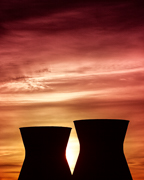



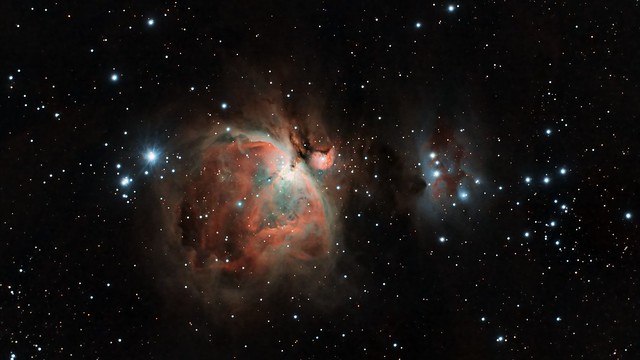



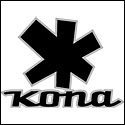

 Had to use a table.
Had to use a table. 


